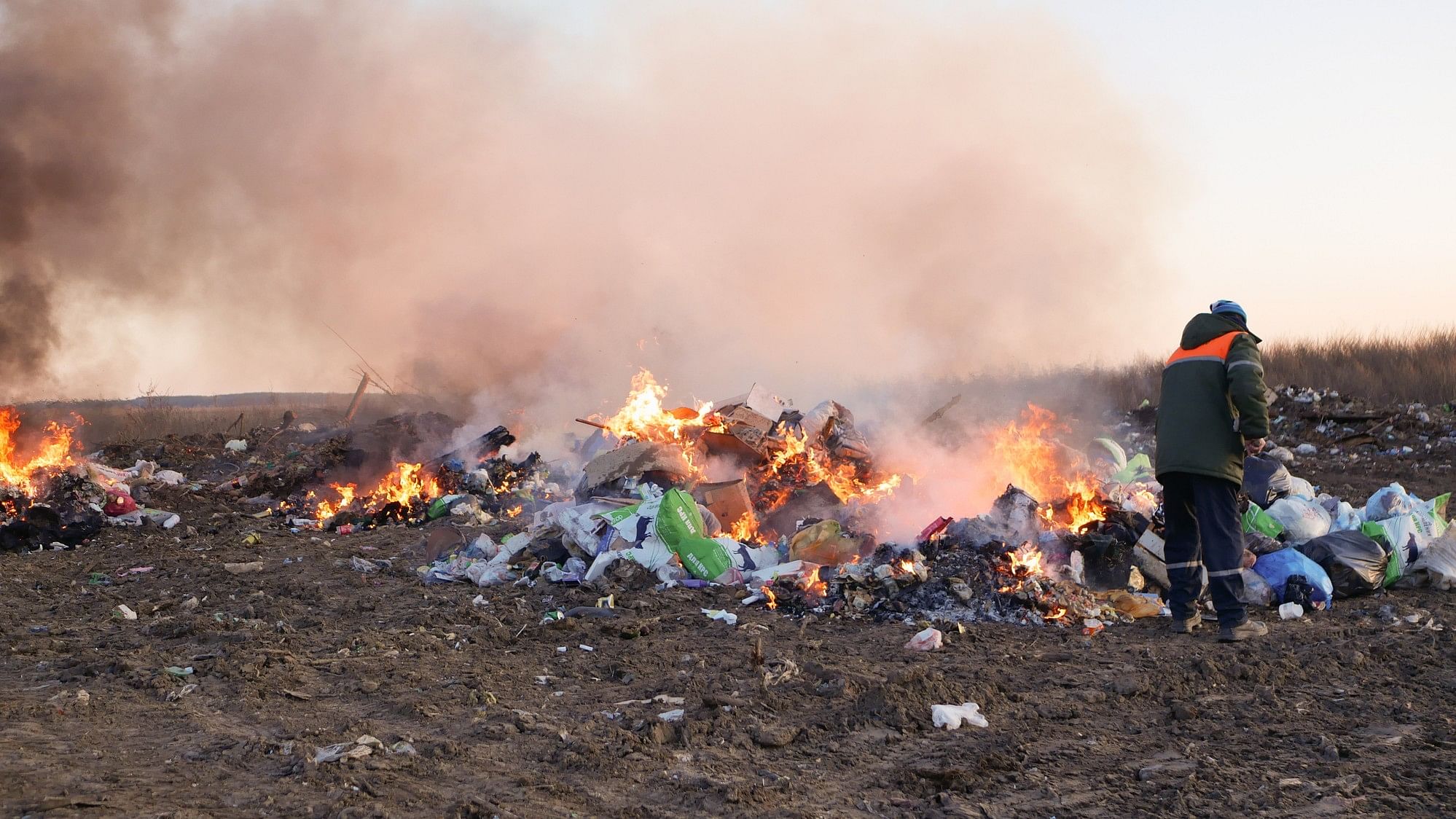
Representational image for garbage burning.
Credit: iStock Photo
Mumbai has been grappling with a garbage dumping issue - a reason also attributed to a sharp dip in the city's air quality this year.
The Brihanmumbai Municipal Corporation (BMC)'s Mumbai Air Pollution Mitigation Plan (MAPM) had identified a host of reasons for air pollution in the city - with garbage and solid waste burning in the open, dust arising from construction site and construction debris, road dust, and its displacement being among the top five.
Let's take a look at how Mumbai's civic agency lost sight of the problem of the garbage dumping in the city:
Problem of waste disposal/segregation
A crucial aspect in waste management is its disposal. A report by The Indian Express pointed out that BMC collected an average of 6,385 metric tonne a day (MTD) of garbage from its 24 municipal wards, 15 per cent more than 2021-22, apart from highlighting that segregation is restricted to residential buildings and gated societies even though one-fifth of the garbage is collected from the three wards (L, G/North, K/East).
In Dharavi, which falls under 'G/North', waste segregation is not carried out due to lack of awareness, with people resort to burning the waste, an official told the publication. This in turn makes the air polluted and poses a serious health hazard as fumes can lead to the formation of carcinogens, which cause cancer. An official further told the publication, “In slum clusters, segregation of waste is not carried out due to lack of awareness. As a result, most people burn the waste.”
Lack of monitoring
Another factor exacerbating the problem is the lack of teams to monitor littering. In the past, the presence of clean-up 'marshals' ensured monitoring of littering and fining the public in case of violations, which included garbage dumping and burning in public spaces.
Marshals were first introduced in the city in 2007 and they had been appointed through private agencies. At present there are no marshals, notes IE, adding that the contract with the private agency which provides these marshals lapsed in March 2022.
An official from the civic body’s Solid Waste Management (SWM), however, told the publication, “A proposal to deploy 30 marshals per municipal ward has been chalked out and the draft has been sent to the Municipal Commissioner. We are expecting the approval within a week following which agency will be appointed.”
No existing records of penalties being imposed
BMC bye-laws, ratified by the state in December 2006, specified a Rs 100 penalty for waste disposal through burning. Surprisingly, in the 17 years since, this penalty amount has remained unchanged, and there are no recorded instances of penalties being enforced for such violations.
An official from BMC's Solid Waste Management department told the publication, "Till now, no penalty has been imposed on anybody for burning open garbage, therefore, there is no record for the same. After the MAPMP guidelines came out, we also checked with the ward offices regarding this… In Mumbai, horticultural waste i.e., shrubs and herbs, are also burnt openly. Technically they can’t even be labelled as solid waste.”
In 2016, the National Green Tribunal (NGT) had mandated a nationwide ban on open burning of garbage, imposing a penalty of up to Rs 25,000, deeming it a significant contributor to air pollution.
While the BMC pledged an increase in penalties under Mumbai's cleanliness and sanitation bye-laws in its MAPMP this March, this action is yet to be implemented.
The MAPMP also pledged inspection drives to identify areas where garbage burning is rampant, and the deployment of nuisance detectors at ward levels to curb dumping and burning of solid waste on roads. Unfortunately, progress on these fronts has been minimal as well.
As the BMC turned a blind eye, pollution levels in the city has surged with Mumbai recording a 45 per cent increase in PM 2.5 particles in October this year as compared to the same month last year, according to data from the Central Pollution Control Board (CPCB).
Notably, primary contributors to PM 2.5 levels include garbage burning, vehicular emissions, and combustion, as opposed to PM 10 particles which largely result from construction activities.